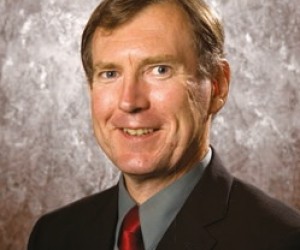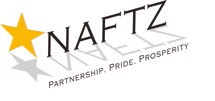
About the Author
Daniel Griswold,
President, NAFTZ, National Association of Foreign-Trade Zones
America’s Foreign-Trade Zones programme is open for business, whether the company is US-owned or a foreign-owned affiliate. By offering duty savings, supply-chain efficiencies, and enhanced security, the programme creates a profitable harbour for global companies selling in the United States and around the world.
The programme was enacted by Congress in 1934 during the Great Depression to help re-engage US business in world markets. Today the FTZ programme is attracting new applicant companies through its new streamlined regulations, while generating record activity in terms of exports and employment.
In 2014, according to the most recent data compiled by the U.S. Foreign-Trade Zones Board, exports from zones reached $99.2 billion. FTZ exports have more than tripled since 2009, far outpacing the growth of overall US exports. Employment in foreign-trade zones in 2014 reached 420,000, the highest number on record. FTZ employment has also outpaced overall US job growth in recent years.
Merchandise admitted to US FTZs in 2014 was $798 billion. Almost two-thirds of that was sourced domestically, demonstrating that zones have become important production platforms where foreign and domestic merchandise is combined by US workers to create value-added final products for sale domestically and abroad. The top industries for zone activity are oil refining, motor vehicle manufacturing, pharmaceuticals, machinery and equipment, electronics, and retail warehouse distribution.
FTZ-using companies admitted $288 billion in foreign-sourced inputs in 2014. Just over half of that total is crude oil, but oil imports have been dropping steeply in recent years because of the rapid increase in domestic oil production in the United States. The fastest growing non-oil imports to foreign trade zones for production operations are petrochemicals, vehicle parts, pharmaceuticals and electronics. The fastest growing non-oil imports for warehousing and distribution are consumer electronics, motor vehicles, metals/minerals, pharmaceuticals, and textiles, clothing and footwear.
Today the programme is home to 2,700 companies, both American and foreign-owned, including such well-known firms as General Electric, Apple Inc., Rolls-Royce, Airbus, Mercedes-Benz, and BMW. More than 250 zones have been authorised across the United States and Puerto Rico, at least one in every state and at every major port of entry, including seaports, airports and land-border crossings. Each zone is a defined area within the geographic United States that is considered outside U.S. Customs territory for purposes of import inspection and duty collection.
For companies operating within an FTZ, that means that Customs officers step in to collect duties only when imported goods leave the zone to enter US commerce, not when goods are admitted to the zone from abroad. Goods can be stored in a zone indefinitely and are exempt from state and local ad valorem inventory taxes.
Duties can also be deferred on imported production equipment that is used to produce final products authorised for zone production. Duties on the equipment are not collected until the machinery is installed, tested, and actually producing the specified goods. This can produce major savings for manufacturing companies that use sophisticated foreign-made equipment as part of their highly automated production process.
For final products that enter the $18 trillion US market from an FTZ, duties can be reduced or eliminated by offsetting “inverted tariffs”. If US tariffs on imported raw materials or components are higher than the tariff on the final product, the zone user can elect to pay the lower, final-product duty on the value of the imported goods when they enter US commerce as part of the final product. Among the industries that benefit most from inverted-tariff relief is the pharmaceutical sector, where duties on final products for the market are typically zero while significant duties remain on the 80% of active pharmaceutical ingredients that are sourced abroad. Relief from inverted tariffs can be especially important to foreign-owned affiliates, which are more likely to retain supplier relationships in the home country.
Duties are eliminated entirely on goods that are re-exported, or on imported inputs that are then re-exported as part of a final product. Foreign-owned affiliates can utilise the zone environment in the United States as a “land bridge” to export to North and South America and on to Asia or back to Europe. Duties are also eliminated on imported goods that are then scrapped or destroyed in the production process.
Operating in an FTZ can accelerate supply-chain velocity by allowing user companies to utilise “direct delivery” of goods from quayside to the zone. Once approved by the local port director, direct delivery allows the user to ship known and repetitive goods directly to the zone on weekends and after hours, with admission notification filed with Customs the next working day. This can cut one to two days off delivery times into a zone, a huge benefit for companies importing perishables and other time-sensitive goods. The large majority of FTZ user companies qualify for direct delivery.
On the entry side, FTZ user companies can realise significant savings on the payment of the Merchandise Processing Fee through the “weekly entry” process. Outside the FTZ environment, companies are liable to pay the MPF on every entry, up to a maximum of $485 per entry. Through weekly entry, which is only available to FTZ-user companies, those payments can be reduced to one per week, resulting in significant savings for the user and a reduction in transactions for Customs. Weekly entry has encouraged major retailers to establish state-of-the art FTZ distribution centres in the United States.
Another real benefit of the FTZ programme is enhanced security. By design, FTZs are secure areas with controlled access, background screening of key employees, and enhanced inventory and record keeping controls. U.S. Customs considers participation in the FTZ programme to be a “best practice” for its Customs-Trade Partnership against Terrorism (C-TPAT).
The FTZ programme is more user-friendly than ever. Companies new to the FTZ environment can tap into a growing support network of providers offering FTZ inventory management software and third-party logistics, as well as experienced grantees who manage administration of the zones at the local level. New regulations that went into effect in 2012 have streamlined the approval of warehouse/distribution applications to 30 days or less, and of manufacturing/production applications to 120 days or less in more than 90% of cases. (For the minority of production applications that involve more politically sensitive imported components, the process can take significantly longer and can result in more restricted authorisation). The Alternative Site Framework introduced by the FTZ Board in 2009 means that zone status can come to any operation located within a multi-county service area, rather than operations needing to locate in a centralised industrial park or warehouse district.
The programme has proven its effectiveness by attracting new investment in the US manufacturing sector from abroad and the “re-shoring” of US investment. Among the high-profile foreign-owned manufacturing companies in America currently utilising the programme are Ricoh, Mitsubishi, Yamaha, Airbus, L.G. Electronics, Sony, Michelin, Bayer CropScience, AstraZeneca, Kawasaki, BP, Citgo, Konica, Canon Virginia, Samsung, and STIHL. British-owned Rolls-Royce Energy Systems has applied for zone status for a facility in Mount Vernon, Ohio, that produces industrial gas turbines, power generation turbines and generator sets. Imported components include AC generators, industrial gas turbines, turbine bases and gearboxes.
One of the most active users of the FTZ programme is the international automobile manufacturing sector. In recent years, active FTZ subzones have been established in the United States by BMW, Mercedes-Benz, Honda, Hyundai, Nissan, Subaru, Toyota and Volkswagen. Their FTZ production facilities employ tens of thousands of American workers in well-paid, sustainable jobs. Combined exports from their FTZ production facilities is more than $10 billion. The FTZ programme is a major factor behind the record export of 2.1 million American-made cars and light trucks in 2014.
International carmakers have also utilised US zones to import finished or near-finished motor vehicles for sale in the US market. Unloading cars into a zone allows the maker to install final finishing parts and then to elect to pay either the duty on the imported part or the finished car, whichever is lower. The duties are not paid until the vehicle leaves the zone and enters US commerce. FTZ No. 74 at the Port of Baltimore is the site of a major importing and distribution zone that has been utilised by both BMW and Mercedes-Benz.
British and other European companies looking to invest in the United States should consider the advantages of locating their operations within a foreign-trade zone. The local FTZ grantee should be able to provide advice on applying for authorisation under the new, streamlined regulations. A sophisticated network of software providers, consultants, brokers, third-party logistics providers and other service companies exists to help companies set up and run profitably in the FTZ environment. With all these advantages, the FTZ programme is one more reason to consider the United States as a prime location for expanding operations.
Further Information
For more information, please contact the National Association of Foreign-Trade Zones, the FTZ Board and SelectUSA in Washington, DC. The local FTZ grantee should be able to provide information on how to apply for foreign-trade zone status at any location in the United States.
Daniel Griswold is president of the National Association of Foreign-Trade Zones, which represents more than 600 grantees, operator/user companies and service providers throughout the United States.
Tel: +1 202-331-1950 x226
Email: dgriswold@naftz.org
Website: www.naftz.org
